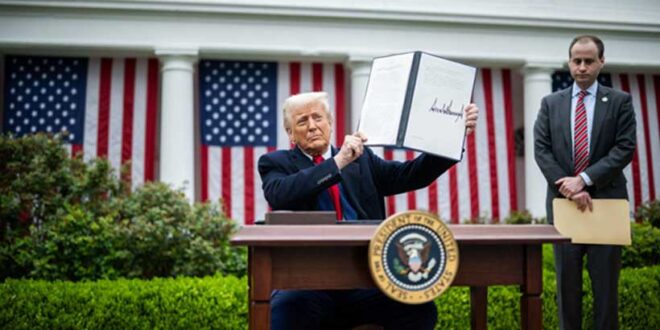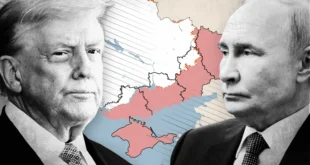The Suez Crisis of 1956 has long served as a cautionary tale on the self-inflicted loss of great power status. The Anglo-French-Israeli invasion of Egypt is still remembered today, largely as a result of Britain’s complacency andgeopolitical miscalculation. The UK Prime Minister at the time, Anthony Eden, wrongly assumed the United States would back an attack on Egypt, particularly as the latter looked to build closer ties with the USSR and China. To the contrary, the US refused support for its closest ally and instead used economic statecraft to pressure the UK into a ceasefire. With the UK facing diplomatic humiliation, global condemnation, and financial crisis, it was forced into a humiliating reversal. The event was so damaging, Britain’s reputation and influence werepermanently diminished.
This national story is only a partial account of a crisis that had wide-ranging and slowly unfolding implications forinternational politics and global energy markets. For Britain, however, Suez was viewed as such a colossal episode of self-harm that it has iconic status in the history of foreign policy.
Suez has long served as an example of the kind of hubris the US should avoid in meeting the threat posed by China. In a 2006 article in The Atlantic, for example, the specter of Suez was raised in the context of the US addiction to public debt, which meant it lay open to the kind of financial coercion at the hands of China that the US visited on the UK in the late 1950s.
Today, comparison between Trump’s tariffs and Suez has been gaining traction because of a widespread view that the former will quicken US American decline. In an interesting sign of the crisis’ contemporary ideological importance, Vice President J.D. Vance recently alluded to the event and his revisionist take on the US’s own errorin not backing Britain’s invasion at the time.
Since the end of the so-called unipolar era of US hegemony, American decline has occupied a major focus of international and geopolitical debate. Before the return of Trump to the White House, Sinocentric explanations tended to dominate. Certainly, addressing the China threat looms large in the motivation of the Trump administration. But Trump and his circle are driven by a geopolitical and geoeconomic vision at odds with conventional trade theory and macroeconomics. They believe global trade and finance are broken and that US policy must change the fundamental distribution of activity in its domestic economy to rival China’s manufacturing power.
For those who see only self-delusion about the extent of US power, Trump’s tariffs will make the US and its allies poorer, not to mention middle and developing economies. The suggestion that the US could force countries to limit Chinese imports while increasing their markets for US goods is wishful thinking, born of an outsized view of American influence and a spurious geopolitical strategy. Diplomatic relations, just like trade and capital flows, cannot in the long term be realistically coerced without reducing US American power and influence. Ultimately, the United States’ tariffs could end up forcing countries in Asia and perhaps even Europe to draw closer to China.
The Suez comparison raises the question of whether Trump’s tariff shock should be understood as a measure of great power decline or a turning point. Suez could be seen less as a single catastrophic event and more as a reference point, illustrating that Britain was no longer able to single-handedly influence the balance of power internationally. By the middle of the 20th century, the UK had seen five decades of declining economic and military power. Suez was therefore an illustration of trends well in motion. Yet the crisis also created a very visible financial fracturing of British power, further undermining sterling as a reserve currency.
Although primarily a diplomatic disaster, Suez quickly developed into a financial crisis, as US opposition to British actions sparked a run on sterling, which threatened to end its role as a viable international currency. Sterling was already vulnerable, and the risky military invasion triggered skepticism in the markets that the pound could maintain its fixed exchange rate for convertibility to the dollar under the Bretton Woods system. British officials considered sterling’s reserve status to be politically and not just economically important for Britain. As Britain hemorrhaged sterling, the US underlined its financial dominance by blocking British emergency withdrawals from the IMF. In essence, the crisis confirmed how dependent sterling was on a monetary order defined by US power.
Fears that US dollar hegemony could be vulnerable to a Chinese version of such financial warfare have never been the most likely cause of the dollar’s decline. Instead, as Barry Eichengreen has argued, the dollar is more vulnerable to a sudden change in market confidence. Changing sentiment on the safety of the dollar system as lender of last resort is the nightmare scenario, not just for the United States, but for the global financial system. In other words, the US and global financial markets are heavily exposed to each other.
The financial panic that followed Liberation Day seemed to confirm Eichengreen’s argument. At the very minimum, the fact that the tariff shock has cast doubt on the safety and stability of the dollar suggests the US economy is far more vulnerable than Trump believes. Even as the announcement of tariffs triggered huge losses in the stock market, it was falling prices for US government bonds and a falling dollar that warned of a much greater loss of confidence and credibility in the US economy and the policies of its government. In the aftermath of the bond market crisis, commentators have argued that this truly marked a turning point for the dollar. Treasuries are no longer a risk-free asset for investors, and the dollar’s hegemony is permanently damaged.
Sterling’s decline from reserve currency status was by no means linear. Although by the late 1940s many believed the dollar would rapidly become the world’s currency hegemon, sterling continued to play a reserve role well into the 1970s. Since the 1950s the dollar has reigned supreme, but this status was built on an extraordinary nexus of US political, military, and financial dominance in the second half of the twentieth century. Even as US power economically has ebbed with the rise of China, discussion of dollar decline has tended to be a topic of geopolitics, with many believing talk of its long-term decline to be overhyped. Until this month, the story of the dollar since the Covid pandemic has been one of extraordinary strength, further underlining the fundamental role it plays in providing liquidity for the global financial system.
Trump’s apparent reversal at the sign the dollar system was beginning to buckle has been taken as evidence of defeat for the administration, as US power and influence came into contact with hard reality. Trump himself has previously stated that the end of dollar dominance would be akin to the loss of a war. Debate will only grow as to whether slow diminution of dominance will now be the case for the US dollar or whether Trump’s policies will accelerate the move towards a multi-reserve currency system. Spooked by a fall in the dollar, companies, investors, and countries could accelerate the move to alternative currencies and bonds, such as the euro, to anchor trade and finance. The latter process in particular could be a relatively long and drawn-out, slow drift from the dollar towards a fragmented global monetary system.
But analysts have also warned of a much more precipitous drop in the dollar, one whose consequences could border on catastrophic for financial markets and the real economy. Given the dollar’s centrality to financial markets and the real economy, not just in the United States but throughout the world, a true dollar crisis triggered by a loss of confidence in the US would make the hubris of Suez look relatively mild by comparison.
 Geostrategic Media Political Commentary, Analysis, Security, Defense
Geostrategic Media Political Commentary, Analysis, Security, Defense





